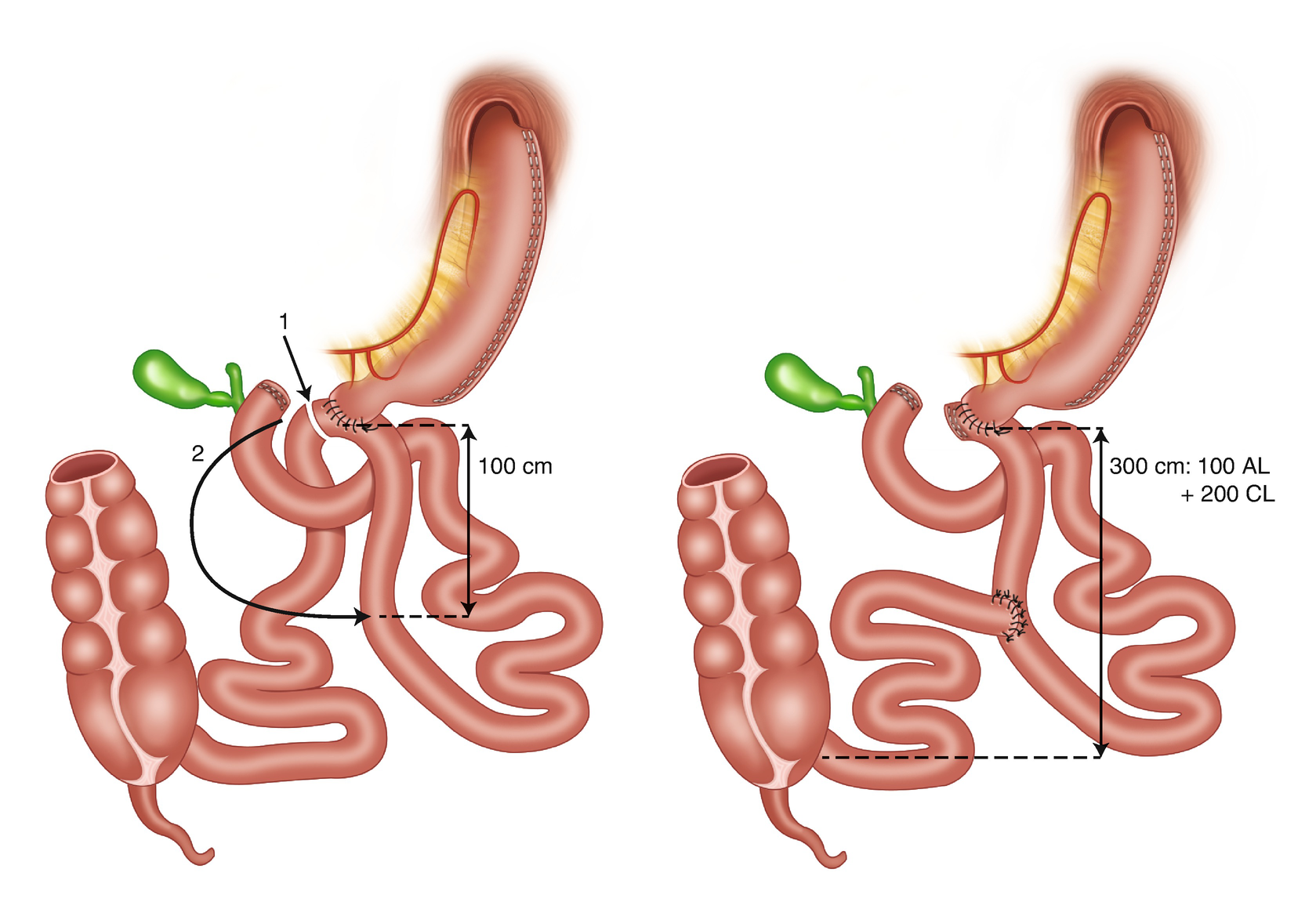What is the Modified Duodenal Switch or SADI-S?
Over the last few years, the modified duodenal switch, single anastomosis duodenal switch or SADI-S a less invasive, modified version of the duodenal switch, has become an option. The ideal patient for a single anastomosis duodenal switch has more weight to lose, particularly patients with a BMI around or over 50.
This procedure combines restriction of food consumption and malabsorption, which allows patients to maximize weight loss quickly and results in very good long-term weight loss maintenance.
No hidden fees and what you need from consult to surgery. Find out more about our pricing. Financing options available.
A sleeve is done first, creating restriction and hunger control. Preserving the pylorus prevents patients from getting dumping syndrome, unlike the gastric bypass.
Then the intestines are re-routed. In the modified duodenal switch, instead of using two connections as in the gastric bypass or the traditional duodenal switch, a single connection is made in a loop configuration. By having one connection instead of two, the surgery is performed more quickly and with less risk of leak.
In the end, the amount of calories the patient’s body absorbs is reduced by limiting the amount of time and length of bowel the food is exposed to.
This is the weight loss operation that can give you the most weight loss, usually 85-90% of your excess weight, and has the lowest chance of weight regain.
Why choose the Modified Duodenal Switch?
Greatest weight loss potential of all bariatric procedures
Approximately 85-90% of excess weight loss
Minimal risk of dumping syndrome
Improvement/resolution in all major co-morbidities (back pain, sleep apnea, high blood pressure, type 2 diabetes, high cholesterol).*
Minimal risk of ulcer disease
Lower risk of bowel obstruction compared to the duodenal switch
Lower incidence of ulcers when compared to the gastric bypass
Less fluctuations in blood sugar than gastric bypass
Similar weight loss to the classic DS, with less complications.
It can be used as a primary weight loss operation or as a revisional procedure due to inadequate weight loss or weight regain, after the Gastric Sleeve, Gastric Band or Gastric Bypass.
*Individual results vary, having weight loss surgery does not guarantee that health problems will be resolved.
Disadvantages*
Close lifelong monitoring for protein malnutrition, anemia and osteoporosis is recommended and lifelong vitamin supplementation is necessary.
Less long term data than classic duodenal switch or gastric bypass as the procedure is newer.
1-2% chance of re-operation due to severe vitamin deficiency, excessive weight loss, etc
*Dr. del Pino and his team will work with you to minimize these risks through continual patient observation, and diet and exercise management.
What is the Modified Duodenal Switch Procedure or SADI-S?
Dr. Mario del Pino explains the Modified Duodenal Switch procedure for weight loss/bariatric surgery.
¿Qué es el switch duodenal modificado o SADI-S?
Dr. Mario del Pino explica el procedimiento Modified Duodenal Switch.
Patient Testimonials










